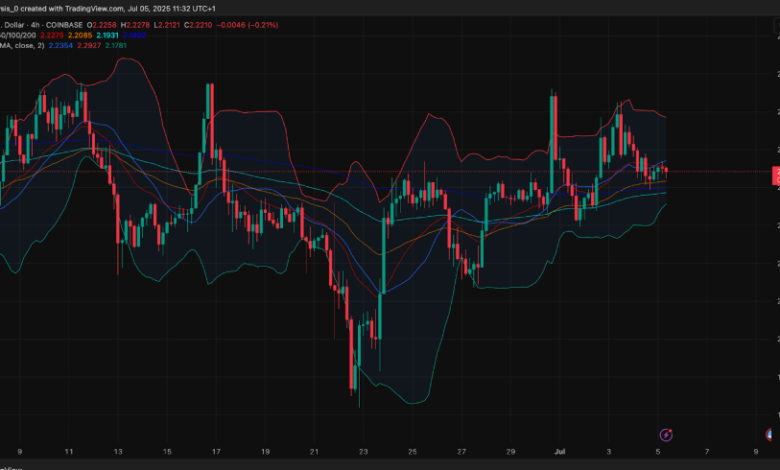What Drives the Volatility in XRP Price USD?

The volatility of cryptocurrency prices is one of the most fascinating and complex features of the market, with numerous factors contributing to the fluctuating values of digital assets. XRP, a well-known cryptocurrency developed by Ripple Labs, is no exception. Understanding the driving forces behind the volatility in XRP price USD and how it compares to xrp price usdt can help investors navigate the unpredictable terrain of cryptocurrency trading.
In this article, we will explore the major factors that contribute to XRP’s volatility, providing insights into the economic, technical, and market-driven elements that influence its price. Whether you’re a seasoned trader or just starting to invest in cryptocurrencies, this guide will help you better understand what affects XRP’s price movements.
Introduction to XRP and its Price Volatility
XRP is a digital asset designed primarily for enabling quick and cost-efficient cross-border payments. Unlike Bitcoin or Ethereum, which are mined, XRP was pre-mined and is primarily used by financial institutions. Ripple, the company behind XRP, offers a network that allows for real-time settlement of payments, reducing costs and processing times for cross-border transactions.
Despite its unique features, XRP’s price often exhibits significant volatility. This is in stark contrast to more stable assets, such as fiat currencies or traditional stocks. The XRP price fluctuations can be quite sharp, with movements of up to double-digit percentages within a single day. But what exactly drives this volatility?
Factors Affecting XRP Price Volatility
Understanding the volatility of XRP requires a deep dive into several key factors that influence its price dynamics. Below, we discuss the primary contributors to XRP’s price volatility.
1. Market Sentiment and Speculation
One of the most significant drivers of volatility in XRP and most cryptocurrencies is market sentiment. Cryptocurrency markets are heavily influenced by investor psychology, and sentiment can swing dramatically based on news, rumors, or major events. Positive news about Ripple’s partnerships or the success of its payment solutions can drive demand for XRP, pushing its price higher.
On the other hand, negative news, such as regulatory concerns or a setback in Ripple’s business model, can cause panic selling, leading to a sharp drop in XRP’s price. Traders often react emotionally to market changes, amplifying the price fluctuations.
2. Regulatory Environment
The regulatory landscape for cryptocurrencies is a major factor in determining price volatility. XRP has faced legal challenges, most notably from the U.S. Securities and Exchange Commission (SEC), which has filed a lawsuit against Ripple Labs, alleging that the company conducted an unregistered securities offering by selling XRP. This lawsuit has led to significant uncertainty in the market, contributing to volatility in the XRP price USD.
Legal rulings and regulatory decisions have an immediate impact on XRP’s price. A favorable ruling could drive the price up, while a negative outcome may cause it to plummet. This uncertainty surrounding XRP’s legal status is a key factor in its price volatility.
3. XRP’s Utility and Adoption
The utility of XRP as a payment solution directly affects its price. XRP’s primary use case is in facilitating fast and low-cost cross-border payments. If Ripple succeeds in increasing the adoption of XRP among financial institutions, the demand for XRP will rise, potentially leading to an increase in its price.
When new partnerships are announced, or major banks adopt Ripple’s technology, the market tends to respond positively, driving the price upward. Conversely, if Ripple faces setbacks in expanding its user base, XRP’s price can experience downward pressure.
4. Market Liquidity and Volume
Liquidity plays a crucial role in determining the volatility of any asset, including XRP. The more liquid an asset is, the less its price is likely to fluctuate. However, the cryptocurrency market is still relatively young compared to traditional financial markets, and XRP’s liquidity can be affected by a lack of sufficient market depth.
When trading volumes are low, even small buy or sell orders can lead to significant price movements. This phenomenon is especially evident when comparing XRP price USD and XRP price USDT. XRP’s liquidity on different exchanges can differ, leading to price discrepancies and volatility.
5. Technological Developments and Upgrades
Ripple continuously works on enhancing its network, improving its scalability, speed, and security. Major upgrades or technological improvements to the XRP ledger or the RippleNet network can influence investor perception and affect XRP’s price. For instance, the launch of new features or the resolution of technical issues can lead to an increase in XRP’s value.
Conversely, technical failures, security breaches, or scalability issues can have the opposite effect, causing price declines. Investors closely monitor the progress of Ripple’s technology, making it a key factor in XRP price fluctuations.
6. Broader Cryptocurrency Market Trends
XRP is not immune to broader trends in the cryptocurrency market. The prices of Bitcoin and Ethereum often set the tone for the entire market, including XRP. When Bitcoin experiences significant price movements, altcoins like XRP typically follow suit, either moving in the same direction or showing inverse correlation.
Market-wide trends, such as increased interest in decentralized finance (DeFi), NFTs, or institutional investment in digital assets, can all impact XRP’s price. Similarly, when the broader cryptocurrency market enters a bearish phase, XRP price USD can decline in tandem with other digital assets.
XRP Price USD vs. XRP Price USDT
It’s important to note that XRP price volatility can differ based on the pair used for trading. While the XRP price USD reflects the price of XRP relative to the U.S. Dollar, the XRP price USDT represents the value of XRP relative to Tether (USDT), a stablecoin pegged to the U.S. Dollar.
Because USDT is designed to maintain a 1:1 peg to the dollar, XRP’s price in USDT may appear less volatile compared to XRP price USD. However, XRP price USDT still experiences fluctuations due to market sentiment, liquidity, and changes in the broader cryptocurrency landscape.
For traders, the choice between XRP price USD and XRP price USDT is crucial. Those who prefer trading against a stablecoin like USDT may find it easier to avoid the volatility associated with fiat currencies like the USD. However, traders using XRP price USD will be more directly exposed to the macroeconomic factors influencing the dollar, such as inflation rates and Federal Reserve policies.
Conclusion
The volatility in XRP price USD can be attributed to a complex interplay of factors, including market sentiment, regulatory developments, liquidity, technological advancements, and broader market trends. These forces combine to create significant price fluctuations, which are characteristic of the cryptocurrency market.
Understanding the factors that drive XRP price volatility is essential for anyone looking to invest or trade in XRP. Whether you’re focusing on XRP price USD or XRP price USDT, staying informed about the latest news, regulatory changes, and market movements will give you a better chance of navigating the unpredictable world of cryptocurrency.
FAQs
1. What causes XRP’s price to be so volatile?
XRP’s price volatility is driven by factors such as market sentiment, regulatory developments, technological upgrades, adoption rates, liquidity, and broader cryptocurrency trends.
2. How does the regulatory environment affect XRP’s price?
Regulatory uncertainty, particularly legal challenges like the SEC lawsuit against Ripple, can cause sharp price fluctuations in XRP, as market participants react to the uncertainty surrounding the asset.
3. Is XRP price USD more volatile than XRP price USDT?
Yes, XRP price USD is generally more volatile than XRP price USDT because USDT is a stablecoin pegged to the U.S. Dollar, reducing its exposure to market fluctuations.
4. Can XRP’s price increase with greater adoption?
Yes, if Ripple successfully expands XRP’s use case in cross-border payments and increases its adoption among financial institutions, the demand for XRP could rise, driving its price upward.
5. How does the broader cryptocurrency market affect XRP price?
XRP is affected by the overall market trends in cryptocurrencies. If major assets like Bitcoin experience price movements, XRP’s price often follows suit.
6. Is it safe to invest in XRP given its volatility?
While XRP can offer high potential for returns, its volatility means there are significant risks involved. It’s crucial to conduct thorough research and consider the risks before investing.





